My previous post was about the amazing ability of a printer to reproduce full color paintings by breaking them down into four separate color inks.
Now, I will talk about the horror of pre-sep. Once upon a time, full color offset printing was too expensive to use on all books. To save money, publishers would have the artist separate the colors themselves. This was called pre-separated art. Books could be printed with two, three or four colors, with each color done on a separate overlay.
I had been out of school for a couple years and was doing textbook work, some book jackets, a couple of chapter books, all the while waiting for my chance to do a picture book. Finally, I got a call from my agent, Dilys Evans. Barbara Lucas, one of the great children’s book editors, had offered me a book! I was ecstatic. Since I was still so new to the field, I had to do a sample piece of art to secure the job. No problem – I’d have done whatever they asked.
Then Dilys told me that it was a pre-sep book.
A what book? I had no idea what that was. I started calling all my friends to find out how it was done. When someone told me, I was shocked.
Dilys made a great suggestion – to do a full color painting that would so impress Barbara that she would agree to print the book in full color instead. So, That’s what I did:
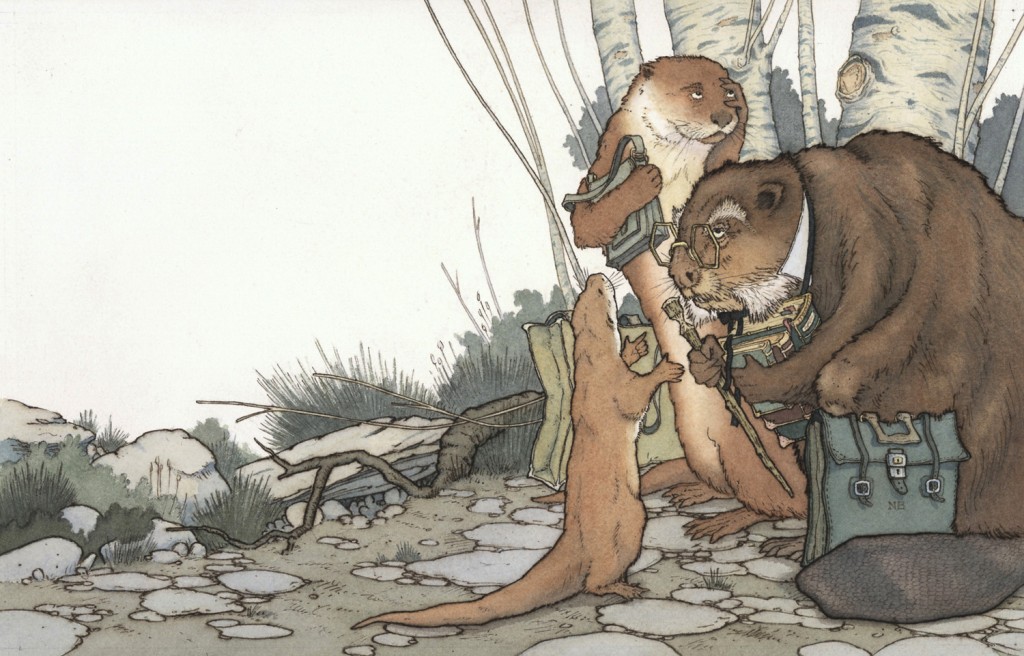
And Barbara loved the painting. The job was mine. But, sadly, the budget couldn’t be changed. Doing that full color piece was worth it for so many reasons. Barbara never forgot the effort I had put into the painting. She gave me another book as soon as I finished Honest Andrew.
So, I had to make some pre-sep art.
As I mentioned, each color must was a separate overlay. What I didn’t mention is that each color overlay had to be done without any color. Yes, in black and white. Overlays were usually done on tracing paper or acetate, with pencil or ink wash.
If, say, you were using a blue and a yellow, you would make an overlay for the blue, putting tone only where you wanted blue to appear – keeping in mind the places where it would overlap the yellow. Then you would make a separate yellow overlay, keeping in mind where yellow would overlap the blue. Always being aware of the density of the blue and yellow, because wherever those colors overlapped you would get warmer or cooler greens.
All in black and white. You wouldn’t know how well you mixed your color until – ready? – you got the printed book back. Really.
So, now I had to try and create a version of my otter painting in three colors. The darkest color, brown, would also be the color of the line plate (and the type):
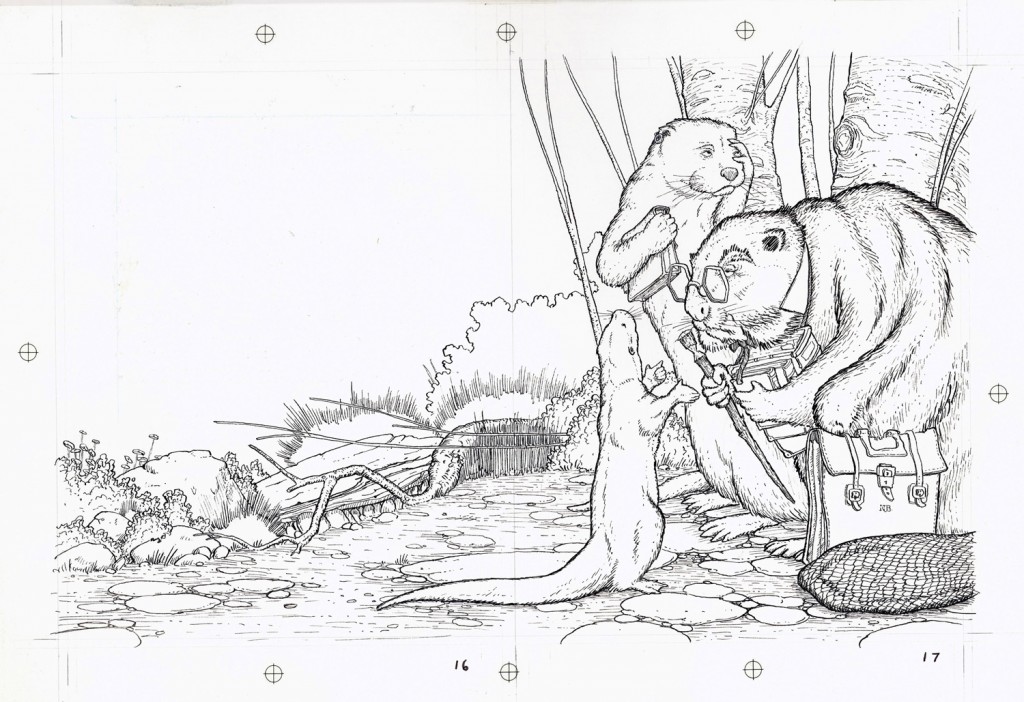
Here is the brown tone overlay (it says brown in the lower right), both on top of the line drawing and by itself:
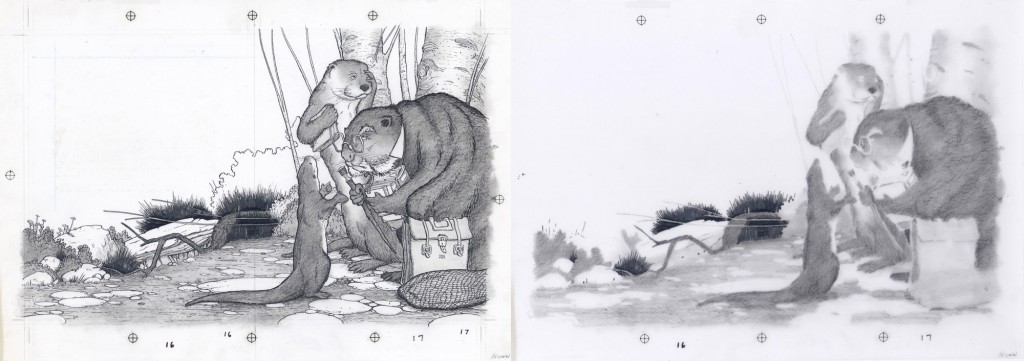
Here is the green layer (indicated in the lower right):
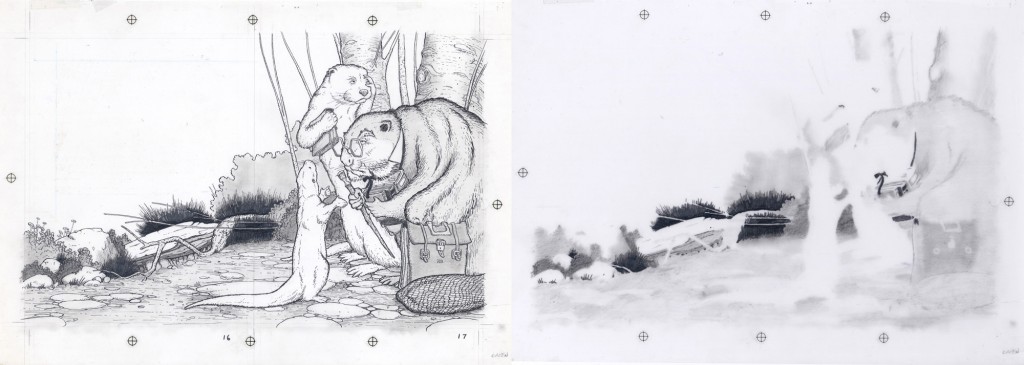
And here is the third color:
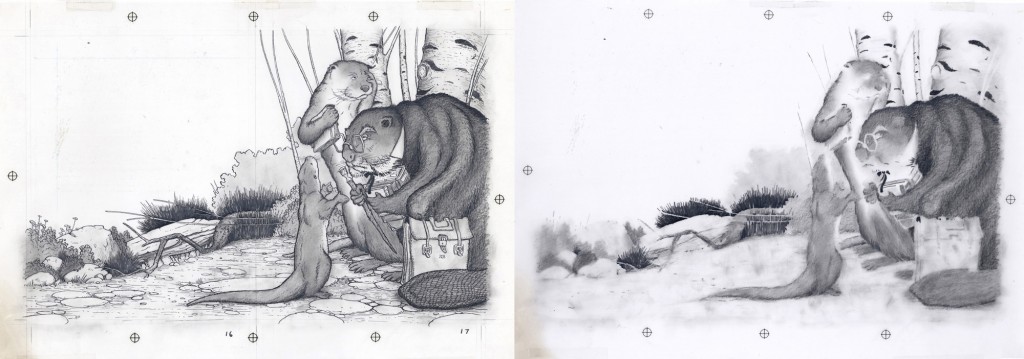
There’s no color written in the lower right. I actually can’t recall exactly what three colors we were going to use. But, it was after doing three overlays for the entire 32-page book, that I found out that it was actually a two-color book.
It was a long time ago, so I’ll just say that communication between the art director and myself was less than clear. We then chose two colors to try and achieve the fullest color range possible. That extra overlay was combined with the brown in the printing. There was LOTS of brown.
Here is all three overlays combined:
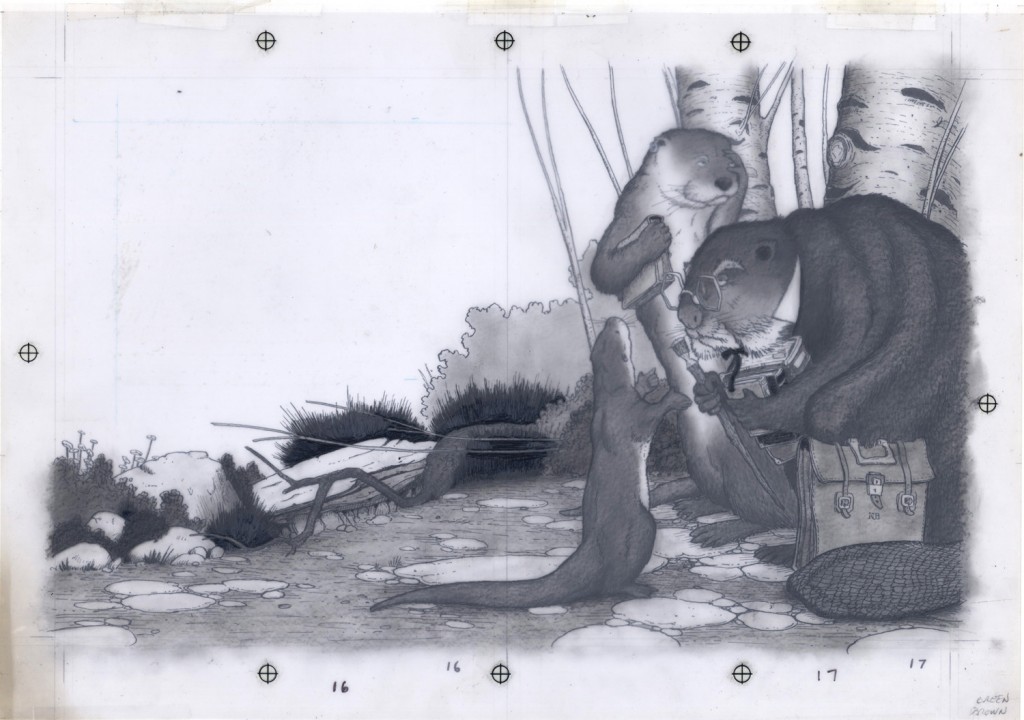
And, here at last, is how the printed book looks:
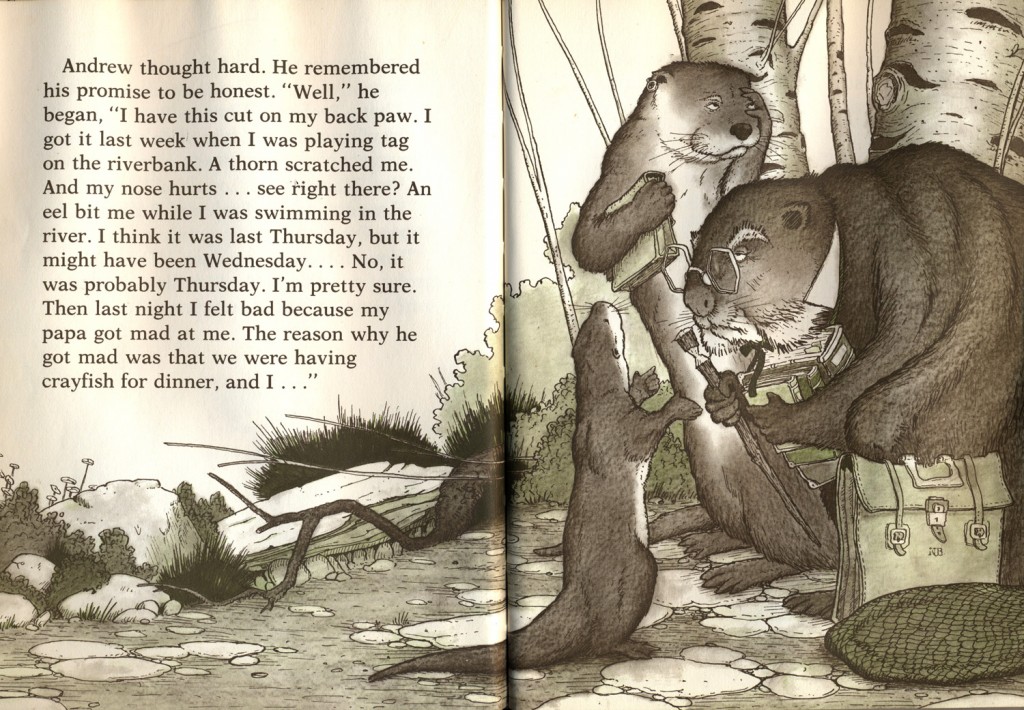
Yeah. I know. Remember this:

Sigh. But, there is an epilogue to all this. Honest Andrew came out in the year of the very first Original Art show, which was founded by Dilys Evans. I didn’t display the pre-sep art (how could I?) – I displayed the full color painting. The New York Times ran an article about the inaugural show and the one piece of art they chose to reproduce was my full color Honest Andrew. In black and white, of course:

By the mid-eighties, four-color printing was the norm and pre-sep, thankfully, pretty much disappeared. Not, though, before I did two more pre-sep books. One of those I will post about. The other? Well, its name shall never be uttered aloud again.